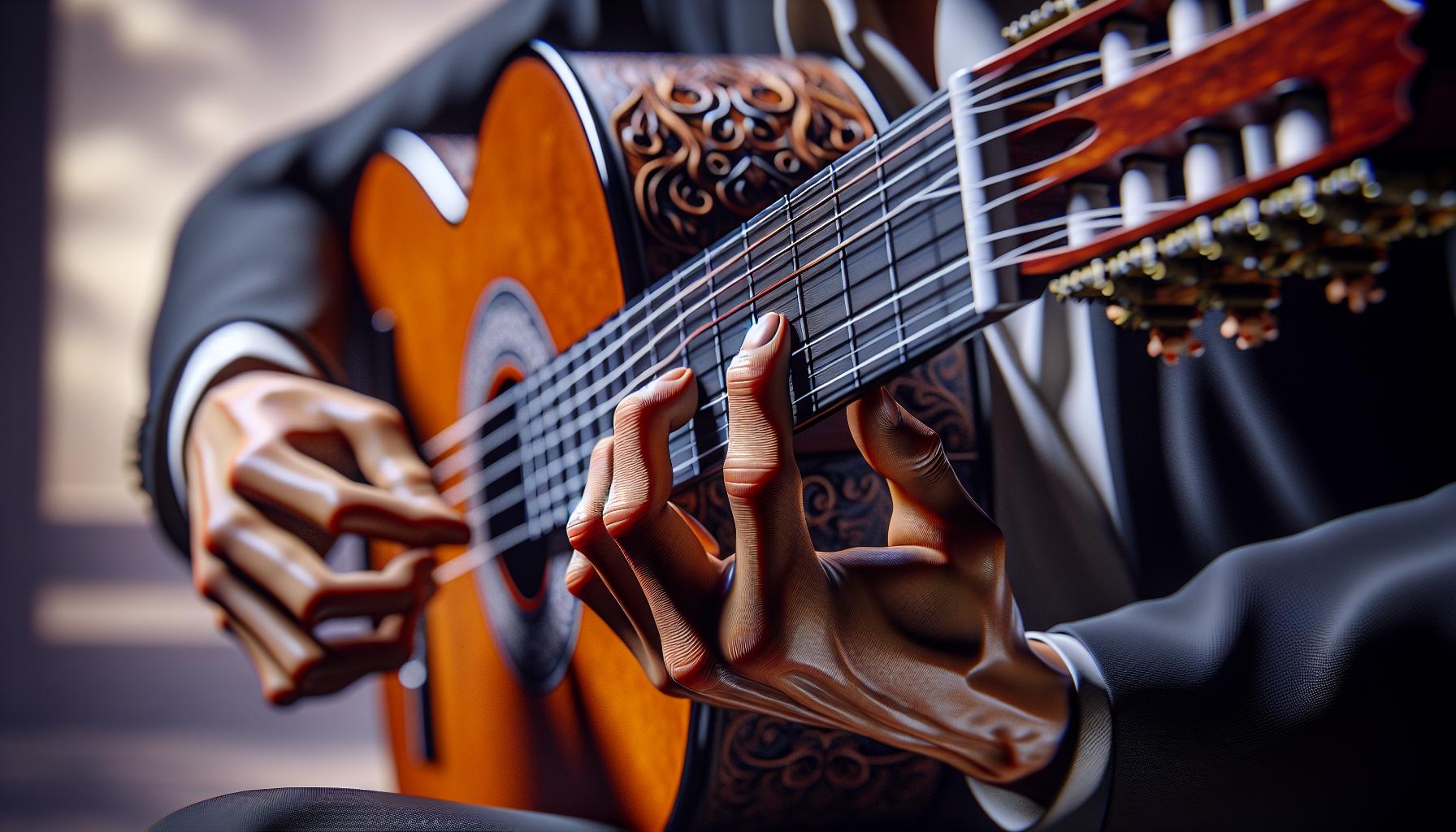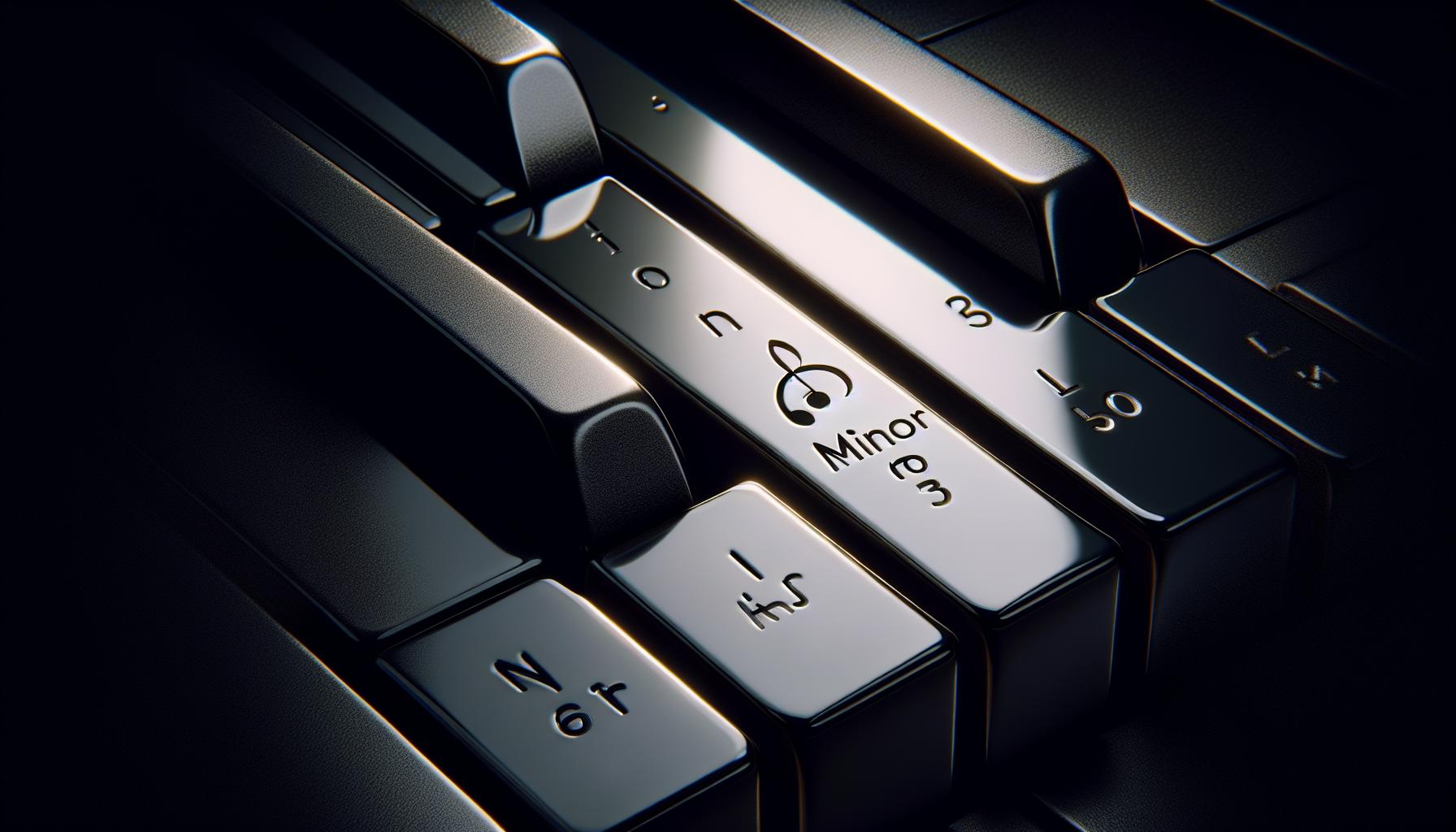If you’re like me, you’ve probably heard the term “musical modes” thrown around in music circles. But what exactly are they? Simply put, they’re unique scales that can transform a piece of music, giving it a distinct flavor or mood.
Diving into musical modes can feel like stepping into a whole new world. From the bright and happy Ionian mode to the dark and melancholic Locrian mode, each one has its own personality. It’s like adding different spices to a dish – they can completely change the taste.
So, whether you’re a seasoned musician looking to expand your knowledge or a beginner seeking to understand the basics, exploring musical modes can open up new possibilities. Let’s embark on this exciting journey together, as I break down the different modes in music and how they can enhance your musical creations.
Contents
The Basics of Musical Modes
As we delve deeper into the realm of music, we’re going to be discovering the fundamentals of musical modes. Musical modes, in the simplest terms, are scales. Now, you might be wondering, “Aren’t all scales the same?” Well, not exactly. A minor swing in the arrangement can give you an entirely different sound. It’s just like changing the recipe to a dish, it can bring out a whole new flavor.
The basic structure of modes involves seven notes. These notes, often referred to as pitches, are key to unlocking fascinating depths within a music piece. We’ve got seven different modes, namely:
- Ionian
- Dorian
- Phrygian
- Lydian
- Mixolydian
- Aeolian
- Locrian
Crucial to note is that each mode begins on a different note of the major scale. For instance, Dorian mode starts on the second note, Phrygian on the third, and so on. Some modes may sound upbeat and joyful like the Ionian, while others may sound mysterious such as Aeolian.
Getting to grips with these modes isn’t about rote repetition. It’s about understanding the pattern, the structure, the underlying mechanic of sound at play here. It can feel like the modes seize control, lead our fingers across the fretboard. But don’t fret, we’ll cover that fascinating process in the next section.
So, all aboard the musical train. Let’s journey into a world less traveled but richly rewarding— the world of musical modes. This is just a peek into the exciting possibilities to open up your music. Let’s keep exploring these dimensions in the subsequent sections. Prepare for the exciting journey that lies ahead of us as we unravel the beauty of different modes in music.
The Ionian Mode: Bright and Happy

As we delve into the realm of musical modes, Ionian mode distinctly stands out with its bright and positive temperament. It’s the first and foremost mode in our seven-pencil set for musical modes. Some might argue that it’s the simplest since it’s identical to the Major scale. But remember, it’s often the simplest of things that harbor profound beauty!
Primarily, the Ionian mode is comprised of seven notes, like all modes, and in its purest form starts with the note ‘C’. To understand this better, refer to the simple representation below:
| Note | C | D | E | F | G | A | B |
|---|---|---|---|---|---|---|---|
| Ionian Mode Order | 1 | 2 | 3 | 4 | 5 | 6 | 7 |
The sequence from note 1 to 7, without modifications, gives the Ionian mode its cheerful tone. Its structure is also easily recognized and played on most musical instruments.
Given this, it’s interesting to know that the Ionian mode has shaped the core of Western music for several centuries. The ‘Pop’ and ‘Rock’ genres particularly fancy the Ionian mode. Many of their iconic songs root back to the classic feel-good nature of this mode.
Subtle tweaks to the Ionian mode like a lowered seventh note can offer an adventurous ride from the typical bright mood to a spicy Mixolydian mode. However, that’s the charm of musical modes. They’re easily adaptable and provide variations to suit a composer’s vision.
So dive right into practicing the Ionian mode over and over again. Once you’ve got a grip on its cheerful Chimera, it becomes your launchpad into the vast universe of musical modes. Next stop, Dorian mode. I can’t wait for us to explore it together in the next section.
The Dorian Mode: Brooding and Mystical

Shift your gaze from the warm and positive Ionian mode; we’re ready to delve into a different musical territory – The Dorian Mode. Often described as brooding and mystical, the Dorian mode is the second of the seven musical modes.
One step darker than its Ionian cousin, the Dorian mode begins on the ‘D’ note. While it retains seven notes like all other modes, the composition of these notes provides the Dorian mode its distinctive, somewhat somber character.
Let’s pick up the fretboard to work through this intriguing mode. It consists of the following sequence:
- D
- E
- F
- G
- A
- B
- C
These seven notes create a unique tonal landscape different from the “happy” Ionian. Despite being a bit darker, you might recognize the Dorian mode from songs like “Scarborough Fair” and Santana’s “Oye Como Va.”
To understand the Dorian mode, don’t merely pore over it theoretically. Practical experience offers the best insights into the peculiar beauty of this music mode. Get your fingers used to the Dorian patterns on your instrument and nurture an ear for its unique sounds.
Up next, we’ll voyage into the moodier Phrygian mode. With this journey through musical modes, I’m sure you’ll soon find a favorite that really resonates with your personal style. Enjoy the exploration – the beauty of music is in its endless diversity and the ability to convey a myriad of feelings and stories. But remember – practice is key! So let’s start striking the right chords and discover the magical world of music modes together.
The Phrygian Mode: Exotic and Mysterious

Let’s journey further into the labyrinth of musical modes, and next up is the Phrygian mode. The third mode in our set of seven, it commences on the ‘E’ note. Often described as exotic and mysterious, it’s a truly unique configuration of tones.
The Phrygian mode is like the dark horse of modes; it’s entirely different from the Dorian and Ionian modes we’ve previously explored. It’s famous in Flamenco music and many forms of metal. So, if you’re a fan of these genres, you’ve probably already felt the Phrygian vibe.
Compared to the other modes, the Phrygian is unusual in its tone arrangement. It has a minor 2nd interval, which gives away its Middle Eastern or Spanish background. The distinguishing characteristics of this mode subtly convey a sense of unease and tension that can provide a fascinating undercurrent to melodies.
To illustrate this, consider the Phrygian mode on the C major scale. Here’s how this looks:
| C Phrygian Scale | Note Sequence |
|---|---|
| C | C |
| Db | D |
| Eb | E |
| F | F |
| G | G |
| Ab | A |
| Bb | B |
When you compare this to the C major (Ionian mode), you can immediately see the difference. The Phrygian mode is all about those unexpected turns and sudden drops that keep the listener guessing.
As in previous sections, let’s not forget that practice is paramount. Play this mode few times and familiarize yourself with its unique rhythms. Enjoy the stellar blend of mystery it lends to your music.
Having immersed ourselves in the Phrygian mode, I’m sure you’re wondering what’s next in our exploration of musical modes. Get ready to dive into the world of the Lydian mode, a realm inhabited by sounds both warm and strange. But more on this enchanting world later.
The Lydian Mode: Dreamy and Ethereal
On the heels of the Phrygian mode, let’s delve into the Lydian mode. In the sequence of our seven musical modes, it’s the fourth. For our auditory journey, it starts on the ‘F’ note when using the C major scale as our basis. The Lydian mode’s peculiar sound is attributed to its notable raised fourth – a distinctive trait that sets it apart from other modes.
This raised fourth scale degree, let me tell you, gives the Lydian mode a certain dreamlike ethereal quality, a tone color that leaves an echo of wonder. It’s a sonic canvas often employed in film scores to create an atmosphere of fantasy and otherworldliness.
Reflecting on the Lydian mode, one word often comes to mind – dreamy. This mode has an otherworldly feel and it’s often used to build an ungrounded atmosphere in the music. You’ll find the Lydian mode at play in any number of major film scores, as it evokes a sense of the extraordinary.
Before we move on, let’s plot the Lydian mode on the C major scale:
| Degree | 1 | 2 | 3 | #4 | 5 | 6 | 7 |
|---|---|---|---|---|---|---|---|
| Note | C | D | E | F# | G | A | B |
Now grab your instrument of choice, and give it a whirl! With every strum, pluck, or press, you might just find yourself slipping into a whimsical world filled with mystery and magic. The Lydian mode draws you in, encourages you to linger; its signature sound taps the boundless creative power of the dream-state.
Delving deeper into musical modes, remain focused and remember, practice makes perfect. Alongside rhythm and melody, modes are a key vehicle for expression in the multi-textured world that is music. On our music theory journey, we move forward, eager to explore the remaining modes. After Lydian, next in line is the Mixolydian. Stick around, we’re just getting started.
The Mixolydian Mode: Bluesy and Rocking
Next, let’s delve into the specifics of the Mixolydian mode. As we switch gears from the ethereal qualities of the Lydian mode, we find ourselves in the grounded, bluesy world of the Mixolydian. Positioned as the fifth mode in the seven musical modes lineup, this mode is known for its rocking sound. Popular in both blues and rock music, it’s the go-to choice for musicians wanting to add a gritty, down-to-earth vibe to their sound.
Fascinatingly, the Mixolydian mode shares the same key signature as the G major scale. Yet, its unique characteristic lies in its lowered seventh note. This somewhat flattened note is precisely what gives the Mixolydian its distinguishing rawness and heartfelt melancholy, setting it apart from the more upbeat, happy tunes resulting from a major scale.
Now let’s look at an illustration of the Mixolydian on the C major scale to get a better understanding of its structure. The pattern of the Mixolydian mode in a C scale looks like this:
| C | D | E | F | G | A | Bb | C |
|---|---|---|---|---|---|---|---|
| I | II | III | IV | V | VI | bVII | I |
Take note of the flattened sevenths in the scale. This is the defining feature of the Mixolydian mode. Compare this scale to the C major scale and you’ll see the subtle but significant difference the flattened seventh makes.
The Aeolian Mode: Dark and Soulful

Shifting our focus from the Mixolydian mode, let’s dive right into another popular musical mode: the Aeolian mode. Often referred to as the natural minor scale, the Aeolian mode has a characteristic dark, soulful sound that’s captivated musicians for centuries.
Like all musical modes, the Aeolian relies heavily on the positioning of its whole and half steps. The Aeolian mode is the sixth mode and is composed using the intervals: whole, half, whole, whole, half, whole, whole. Let’s illustrate this with the C major scale:
| Note | C | D | E | F | G | A | B | C |
|---|---|---|---|---|---|---|---|---|
| Intervals | – | Whole | Half | Whole | Whole | Half | Whole | Whole |
This gives us the notes C, D, Eb, F, G, Ab, Bb, and C.
Markedly, the Aeolian mode has a minor quality due to its minor third interval, unlike G Mixolydian that reflect a major quality. The darker, more reflective nature of the Aeolian mode comes from this unique minor quality.
A key aspect of the Aeolian mode is its use in different music genres. Its soulful sound makes it a favorite among Blues, Metal, and Jazz musicians. Listen to some tracks in these genres and you’ll likely hear the powerful influence of the Aeolian mode.
We can compare Aeolian mode to C Major scale, it’s evident this particular mode lends a different atmospheric depth to compositions. As we can see, musical modes aren’t just about altered notes but also about the emotional response they evoke. Though this paints a brief overview of the Aeolian mode, there’s far more to its usage and influence in music.
The Locrian Mode: Eerie and Dissonant

In our journey through musical modes, we’ve come to the Locrian mode. Unique and intriguing, this mode is the seventh and final mode in the diatonic scale. It’s known for its eerie and dissonant sound, which sets it apart from other modes.
Created from the seventh degree of a Major scale, the Locrian mode is often described as minor due to its flat third. However, what truly makes this mode standout is its diminished fifth, often referred to as the “tritone“, or the “devil’s interval“. This gives the Locrian its signature dissonant sound.
Let me break this down: if we take the C Major scale, for example, the Locrian mode would start on B and continue with the same notes as the C Major scale, just starting and ending on B instead of C. Here’s what that looks like:
| Note | Interval |
|---|---|
| B | 1 (root) |
| C | b2 |
| D | b3 |
| E | 4 |
| F | b5 |
| G | b6 |
| A | b7 |
| B | Octave |
The flat 2nd, flat 5th, and flat 6th intervals are what create the dissonance, setting up an eerie, uncomfortable feel that’s undeniably captivating.
You’ll find the Locrian mode isn’t as popular in mainstream music due to its dissonance. It’s more commonly used where tension, mystery, or an eerie feel is desired, such as in movie scores, video game music, and some experimental music genres.
One last interesting point about Locrian mode is that it’s often considered a theoretical mode. Why’s that? Well, its diminished fifth makes it hard to use in a tonal context as it lacks a perfect fifth interval. Despite this, the Locrian mode remains a fascinating part of musical theory, providing a distinct sound that intrigues, mystifies, and challenges composers and listeners alike.
Enhancing Your Musical Creations with Modes

So you’ve learned about the unique and intriguing Locrian mode. Now you might be wondering, “How can I use this in my own music?” It’s possible, and I’m here to guide you through it.
Injecting Dissonance With Locrian Mode
The eerie, dissonant sound of the Locrian mode, especially from the flat 2nd, flat 5th, and flat 6th intervals, is the highlight of the party. It’s like bringing a mysterious and exotic dish to a commonplace dinner. But remember, it’s important to add these flavors with care.
You could choose to compose an entire piece in Locrian mode if you’re after a distinctive, experimental air. But consider, alternatively, using it to inject a bit of unexpected dissonance in your compositions. By adding sections in Locrian mode to an otherwise familiar-sounding piece, you’ll create contrast. It’s all about texture. You’re offering your listener an unexpected twist, enhancing the overall storytelling of your music.
Locrian Mode in the Entertainment Industry
You could find Locrian mode echoing in our everyday life in places you might not expect: movie scores, video game music, and anything that needs an otherworldly or mysterious feel. Think about how effective the unsettling qualities of this mode would be in a suspenseful movie scene or a tense moment in a video game. It’s the oddball that stands out, making it an interesting choice for scoring.
If you’ve been stuck in your compositions or looking to push your musical boundaries, switching up your modes could be the answer. Don’t shy away from experimenting with Locrian and other lesser-used modes. It could be exactly the twist you need to carve out your niche in the music scene. You can follow the chart of the Locrian mode on the C Major scale for your practice.
And above all, remember that music is an art of exploration and enjoyment. Be fearless in your musical adventures.
Conclusion
So there we have it. The world of musical modes is vast and full of potential for creativity. The Locrian mode, with its unique dissonance, can bring a fresh perspective to your compositions. It’s a go-to for those eerie, otherworldly vibes in movie scores and video game music. But don’t stop there. Each mode carries its own distinct flavor, waiting to be explored and harnessed in your music. Don’t be afraid to step outside the comfort zone of commonly used modes. Remember, it’s all about pushing boundaries in your musical journey. So why not start experimenting today? The next great piece could be just a mode away.
